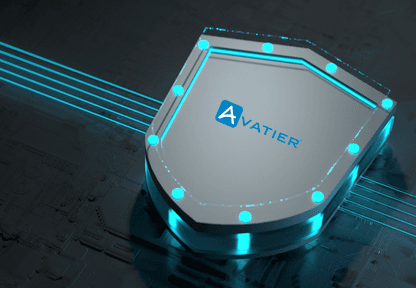April 23, 2025 • Nelson Cicchitto
Implementing Just-in-Time (JIT) Access: How Modern Enterprises Reduce Attack Surfaces
Learn how Just-in-Time (JIT) access management reduces security risks by 70%, minimizes standing privileges, and access for remote workforces

Traditional “always-on” privileged access presents an unnecessary risk to enterprise security. Just-in-Time (JIT) access management has emerged as a critical security strategy that significantly reduces attack surfaces by providing temporary, context-aware access only when needed and automatically revoking it when the need expires. According to recent research by Gartner, organizations implementing JIT access management can reduce the risk of privileged credential abuse by up to 70%.
Understanding the Perils of Standing Privileges
Standing privileges—permanent, always-active access rights—create significant security vulnerabilities. When users maintain continuous access to critical systems and data, these privileges become prime targets for attackers. According to the 2023 Verizon Data Breach Investigations Report, over 82% of breaches involved the human element, including the use of stolen credentials.
Traditional access management approaches leave organizations with:
- Expanded attack surfaces due to unused but active privileges
- Increased risk of lateral movement by attackers who compromise accounts
- Compliance challenges with the principle of least privilege
- Difficulty maintaining visibility into who has access to what, and why
The Just-in-Time Access Paradigm Shift
Just-in-Time access represents a fundamental evolution in identity and access management, aligning perfectly with zero-trust security principles. Rather than granting permanent access, JIT provides temporary, purpose-specific privileges that automatically expire after use or a predetermined time period.
Core Components of JIT Access
- Temporary Privilege Elevation: Access rights are elevated only when needed for specific tasks
- Access Request Workflow: Automated approval processes to request temporary access
- Time-Limited Authorizations: Predetermined expiration for all access grants
- Context-Aware Authentication: Additional verification based on risk factors
- Automated Revocation: Immediate termination of access once no longer needed
Business Benefits Beyond Security
While security improvements drive most JIT access implementations, the business benefits extend far beyond risk reduction:
Streamlined Operations
JIT access management eliminates the administrative burden of manually provisioning and deprovisioning privileges. This automation reduces IT resource demands and accelerates access delivery. According to Avatier’s data, organizations implementing automated user provisioning typically experience a 60% reduction in access management workload.
Enhanced Compliance Posture
Regulatory frameworks including GDPR, HIPAA, PCI DSS, and SOX all emphasize the principle of least privilege. JIT access provides a natural mechanism to enforce and demonstrate compliance with these requirements through:
- Continuous enforcement of minimum necessary access
- Detailed audit trails of access requests, approvals, and usage
- Time-limited authorizations that prevent access sprawl
- Automated workflows that enforce separation of duties
For healthcare organizations bound by HIPAA, implementing compliant identity management solutions that include JIT capabilities ensures both security and regulatory adherence.
Improved User Experience
Counter-intuitively, JIT access can actually improve user experience when implemented correctly. By streamlining access request processes through self-service portals and mobile applications, users gain faster access when they need it without lengthy approval delays.
Technical Implementation Strategies
1. Zero Standing Privileges (ZSP) Approach
The most rigorous form of JIT is Zero Standing Privileges, where no permanent elevated access exists in the environment. All privileged access is temporary and provided only when necessary through an automated workflow.
Implementation considerations include:
- Identifying all existing standing privileges across systems
- Defining request and approval workflows for each access type
- Establishing appropriate time limits for different privilege types
- Implementing robust monitoring of privileged session activities
- Creating break-glass procedures for emergency access
2. Privileged Access Management Integration
JIT access works optimally when integrated with a comprehensive privileged access management solution. This integration enables:
- Centralized policy control across diverse systems
- Automated credential rotation during privileged sessions
- Detailed session recording for forensics and compliance
- Risk-based authentication triggers for high-value access
- Cross-platform consistency in access implementation
3. Workflow Automation
Effective JIT deployment relies heavily on workflow automation to process access requests efficiently. Modern solutions enable:
- Self-service request portals with mobile access options
- Multi-level approval chains based on access sensitivity
- Integration with IT service management platforms
- Automated provisioning and deprovisioning to target systems
- Time-bound access with configurable durations
JIT Access for Remote and Hybrid Workforces
The dramatic expansion of remote work has intensified the need for JIT access. Remote workers accessing sensitive systems from various networks and locations present unique security challenges that JIT addresses effectively.
For remote workforces, implementing JIT access requires:
- Strong MFA Integration: Multi-factor authentication becomes even more critical for remote JIT access requests. According to Microsoft, MFA can block over 99.9% of account compromise attacks.
- Zero-Trust Network Access: JIT works in tandem with zero-trust network access (ZTNA) to ensure that remote users only gain access to specific applications rather than entire network segments.
- Device Posture Assessment: JIT access decisions should incorporate device security posture as a key factor, ensuring that only compliant devices can receive elevated access.
- Geolocation Awareness: Access policies should consider user location patterns, potentially requiring additional verification for unusual locations.
Common JIT Implementation Challenges
Resistance to Workflow Changes
Users accustomed to permanent access often resist transitioning to a request-based model. Overcoming this resistance requires:
- Executive sponsorship emphasizing security benefits
- Phased implementation starting with high-risk systems
- User education about security risks of standing privileges
- Streamlined request processes to minimize friction
Legacy System Integration
Many legacy systems lack native support for temporary access models. Organizations may need to:
- Implement privileged access management solutions that broker access
- Develop custom scripts for automated provisioning/deprovisioning
- Consider application-level controls where system-level JIT isn’t possible
- Prioritize systems for JIT implementation based on risk profile
Emergency Access Considerations
Critical situations may require immediate access where normal request workflows are too slow. Robust JIT implementations must include:
- Break-glass procedures for emergency access
- Pre-approved emergency roles with appropriate limitations
- Special audit procedures for emergency access usage
- Post-incident reviews of all emergency access events
Measuring JIT Access Effectiveness
To ensure your JIT implementation delivers the expected security benefits, establish metrics including:
- Privilege Reduction Percentage: Measure the reduction in standing privileges
- Mean Time to Access (MTTA): Average time between request and access grant
- Access Usage Rate: Percentage of granted privileges actually used
- Unauthorized Access Attempts: Failed attempts to access without approval
- Approval Rate Variance: Changes in approval patterns that may indicate issues
Real-World Success: JIT Access in Action
A global financial services organization implemented JIT access for their cloud infrastructure and experienced:
- 85% reduction in standing admin privileges
- 92% decrease in the average lifetime of elevated permissions
- 64% improvement in audit compliance findings
- Zero privilege-related security incidents in the 18 months following implementation
Similarly, a healthcare provider implementing JIT access for clinical systems reported:
- Enhanced HIPAA compliance with demonstrable least privilege enforcement
- 40% reduction in time spent on access reviews
- Improved clinician satisfaction through streamlined emergency access
- Complete elimination of orphaned privileged accounts
Building Your JIT Access Implementation Roadmap
Phase 1: Assessment and Planning
- Inventory all privileged accounts and access rights
- Identify high-risk systems for initial implementation
- Define access request workflows and approval chains
- Establish appropriate access time limits by role and function
- Develop metrics to measure implementation success
Phase 2: Technology Selection and Integration
- Evaluate privileged access management solutions with JIT capabilities
- Assess integration requirements with existing identity infrastructure
- Implement necessary infrastructure for automated provisioning
- Test workflows in controlled environments
- Develop emergency access procedures
Phase 3: Pilot Implementation
- Select a limited scope of systems and users for initial deployment
- Provide comprehensive training for pilot participants
- Gather feedback on user experience and workflow efficiency
- Measure security and operational metrics
- Refine processes based on pilot results
Phase 4: Full Deployment and Optimization
- Roll out JIT access across all target systems in prioritized waves
- Conduct organization-wide awareness and training
- Implement continuous monitoring of access patterns
- Regularly review and refine access policies
- Integrate JIT metrics into security reporting
Conclusion: The Future of Privileged Access
As threat landscapes evolve and regulatory requirements intensify, Just-in-Time access will become the standard approach for managing privileged access. Organizations that implement JIT now gain immediate security benefits while positioning themselves for the zero-trust future.
By eliminating standing privileges, automating access workflows, and enforcing the principle of least privilege through time-limited access, organizations dramatically reduce their attack surface while maintaining operational efficiency. The most successful implementations balance security requirements with usability, ensuring that legitimate access needs are met while unnecessary privileges are eliminated.
For organizations beginning their JIT journey, partnering with experienced identity management providers like Avatier can accelerate implementation and ensure integration with existing security infrastructure. Avatier’s Identity Anywhere Lifecycle Management solution provides the automation, workflow capabilities, and governance features needed to implement effective JIT access across complex enterprise environments.
The question is no longer whether to implement Just-in-Time access, but how quickly organizations can transition from permanent privileges to this more secure approach. Those who move decisively will see immediate security benefits while positioning themselves ahead of both attackers and compliance requirements.









